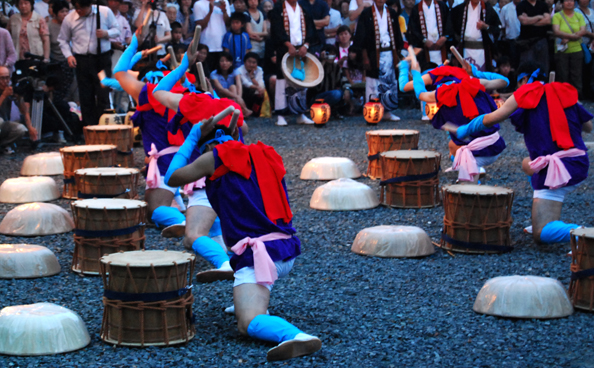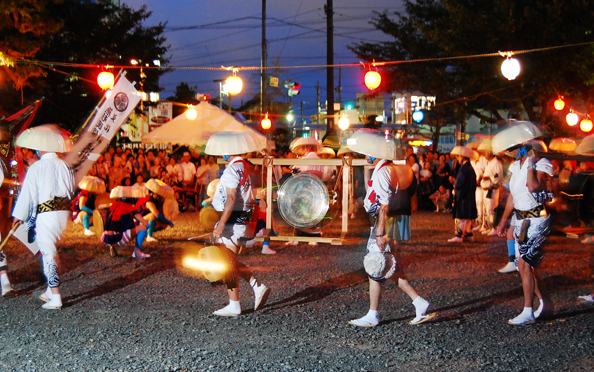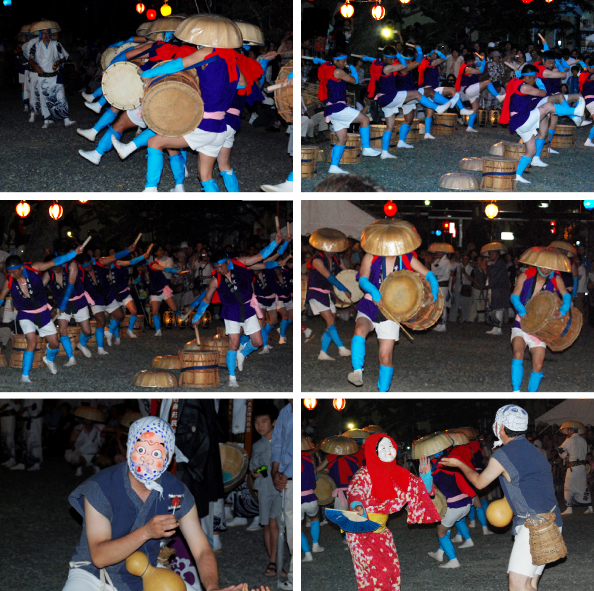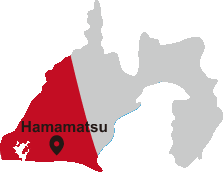

Summer Traditions in Enshū:About Enshū Dai-nenbutsu
July 15 (Sat), 2023 6:30pm - 8:30pm
[Place] Saigagake Museum 【犀ケ崖資料館】 MAP
25-10 Shikatani-cho, Chūō-ku, Hamamatsu-shi 432-8014
25-10 Shikatani-cho, Chūō-ku, Hamamatsu-shi 432-8014
Enshū Dai-nenbutsu is a folk performance that is nationally recognized as a "significant intangible folk cultural asset of Japan." The performance is held in and around Hamamatsu during o-bon (the Japanese Festival of Souls) in July or August and is an iconic summer tradition of the Enshū region. During the ceremony, priests visit the homes of people who have lost a family member in the past year. There, they dance to the accompaniment of taiko drums and kane chimes while intoning Dai-nenbutsu (Buddhist prayers). Every year, families request that the priests visit their homes, chant Dai-nenbutsu, and perform the deceased's first memorial service. The Enshū Dai-nenbutsu is performed by a troupe of approximately thirty people including singers and people playing flutes, taiko, and kane. The leader carries a giant paper lantern and, moving in rhythm with the percussion instruments, visits each house in turn. Upon entering the courtyard of a home, the group sets the taiko in the center and sōban gongs behind them. Once preparations are complete, the memorial service begins; the group leader directs choruses of Dai-nenbutsu and poetry, and the taiko players dance vigorously while beating their drums.
The origins of Enshū Dai-nenbutsu reach all the way back to the Battle of Mikatahara, known for being the only battle that Tokugawa Ieyasu (1542-1616) lost in his entire life.
The origins of Enshū Dai-nenbutsu reach all the way back to the Battle of Mikatahara, known for being the only battle that Tokugawa Ieyasu (1542-1616) lost in his entire life.

The Battle of Mikatahara
In the third year of the Genki reign (1572), Takeda Shingen (1521-1573) and his army of 25,000 met Tokugawa Ieyasu's army of 11,000, including 3,000 reinforcements from Oda Nobunaga (1534-1582), at Mikatahara. There, they waged a devastating battle that completely drained both armies. The battle was evenly matched until Takeda Katsuyori's (1546-1582) forces charged in. The Tokugawa formation broke, and the whole army was routed back to Hamamatsu Castle. Despite their apparent victory, the Takeda forces did not slacken in their pursuit. At the time of the battle, Ieyasu was an unseasoned 31 year old, and he had exhausted every single tactic in his repertoire to challenge the battle-hardened Takeda Shingen.
The Battle of the Sai Cliffs
After retreating to safety, Ieyasu ordered all of the castle gates to be opened and the entire fortress to be illuminated by bonfires. When the pursuing Takeda forces observed this, they became cautious and called off the attack, instead leaving a number of soldiers to camp overnight on the Sai Cliffs nearby. Ieyasu resolved to save face after his defeat by launching a counter offensive the very same night, and attacked the camp at the Sai Cliffs. His plan was to attempt to route Takeda's army over a false bridge he had built over the cliff. The bridge was constructed of white cloth and made to look strong enough to support an army. Additionally, to lure his enemy into a false sense of security, Ieyasu set fire to the Fusaiji Zen temples in Hamamatsu to make it appear as if the castle was ablaze. He then fired rifles at the Takeda camp from the rear to trick them into thinking that Oda Nobunaga's reinforcements had arrived. Takeda's army was driven to the bottom of the valley, where Ieyasu inflicted massive damage, killing and injuring many men.
The Enshū Dai-nenbutsu was begun as a prayer for the souls of the Takeda soldiers who were felled at the battles of Mikatahara and Sai ga Gake, and has continued each year under the guidance of the Zen priests there.
The Enshū Dai-nenbutsu was begun as a prayer for the souls of the Takeda soldiers who were felled at the battles of Mikatahara and Sai ga Gake, and has continued each year under the guidance of the Zen priests there.
2023.6.23 update
Content may be subject to change after publication. Please also note that we are not accountable for loses and damages that may occur as a result of said changes.
Content may be subject to change after publication. Please also note that we are not accountable for loses and damages that may occur as a result of said changes.






